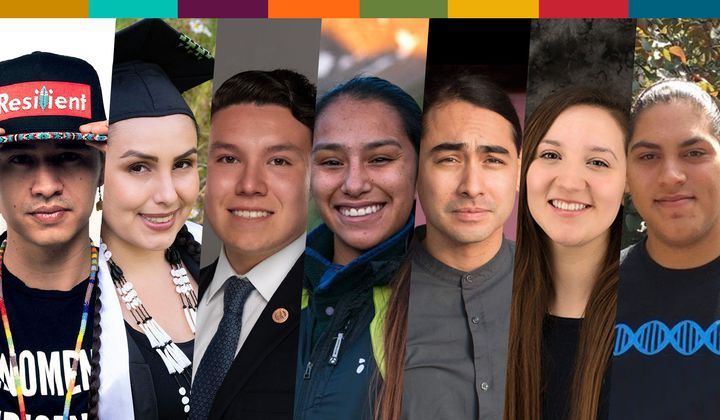12
Oct
Celebrate Indigenous Peoples’ Day Today

Five ideas for celebrating Indigenous Peoples’ Day 2020,
National Museum of the Native American, Smithsonian
(Beyond Pesticides, October 12, 2020) Fourteen states, the District of Columbia, 130 cities and towns, and numerous school districts across the country are officially honoring Indigenous People today. Many of the 14 states have officially changed the holiday’s name from Columbus Day to Indigenous Peoples’ Day. (South Dakota uses the name Native Americans Day.) In some cases, states have added the recognition of Indigenous Peoples’ Day alongside Columbus Day.
When New Mexico passed legislation last year changing “Columbus Day” to Indigenous Peoples’ Day, the Navajo Nation issued the following statement:
“In 1937, the federal government declared Columbus Day as a holiday without input from Native Americans and without knowing the true history of Native Americans. For many years, Indigenous people have protested Columbus Day because it celebrates colonialism, oppression, and injustice inflicted on Indigenous peoples,” said President Jonathan Nez. “Observing Indigenous Peoples’ Day allows citizens to recognize our rich heritage and serves as a step toward healing and growth.”
As Good Housekeeping Magazine points out, “There are over 600 Native Nations in the United States, and 6.8 million Americans identify as Native American. That’s about 2% of the country’s total population. And this year, with Native Americans disproportionately impacted by the COVID-19 pandemic, recognizing that population’s history and cultural identity is even more important.” Pesticide exposure exacerbates the health conditions—respiratory, immunological, and neurological illness—that increase vulnerability to the coronavirus. Beyond Pesticides has urged the transition to organic land management to eliminate hazardous pesticide use in food production and the management of lawns, parks, playing fields, and school yards. Beyond Pesticides is also advocating changes to federal and state pesticide law which ignores disproportionate risk to people of color, including hazardous exposure patterns, comorbidities, and preexisting conditions.
President Nez said, “[I am] hopeful that the passage of the bill will also inspire educators throughout the state to teach the true history of Indigenous peoples so that the younger generations will know the challenges that were overcome by our people.”
New Mexico State Representative Derrick J. Lente (D), a co-sponsor of the legislation that was signed into law last year by Governor Michelle Lujan Grisham (D-NM), noted that Indigenous people have greatly contributed to New Mexico’s rich and vibrant cultural history. “This day is an act of restorative justice for our Indigenous communities, and it is a time to reflect on our understanding of our country’s history, both the good and the bad,” Mr. Lente said.
Beyond Pesticides has been honored to work with the Washoe Tribe of Nevada and California to pilot a rangeland management program that replaces toxic herbicide use with a holistic land management system with goats. Beyond Pesticides’ organic land management program in 2016-2017 with the Washoe Tribe and its Washoe Tribal Environmental Protection Department (WEPD) brought 450 goats to tribal lands for a managed goat grazing project.
The program was launched as a pilot, an alternative to using herbicides for managing invasive weeds, including Perennial Pepperweed, Hoary Cress, Canada Thistle, Russian Knapweed and others. Goat grazing has been demonstrated to be an effective tool because the herd eats unwanted vegetation then cycles nutrients back into the soil, thus fertilizing. After drinking, goats deliver water to dry sites one pint at a time, thus irrigating. With 1,800 hooves, the goats are also aerating, mulching, and tilling the soil.
See the goat grazing session from Beyond Pesticides 36th National Pesticide Forum (2018), Organic Neighborhoods: For healthy children, communities and ecology.
All unattributed positions and opinions in this piece are those of Beyond Pesticides.










